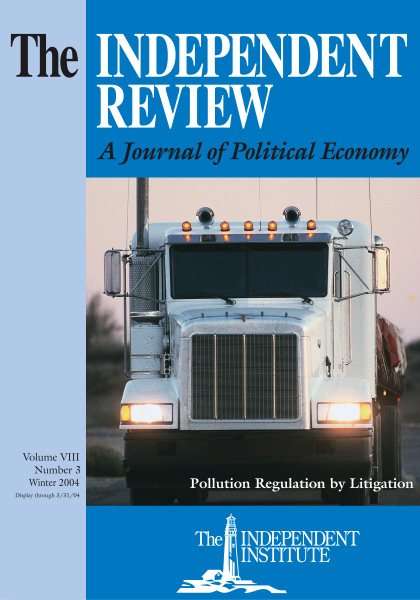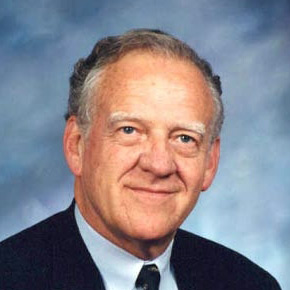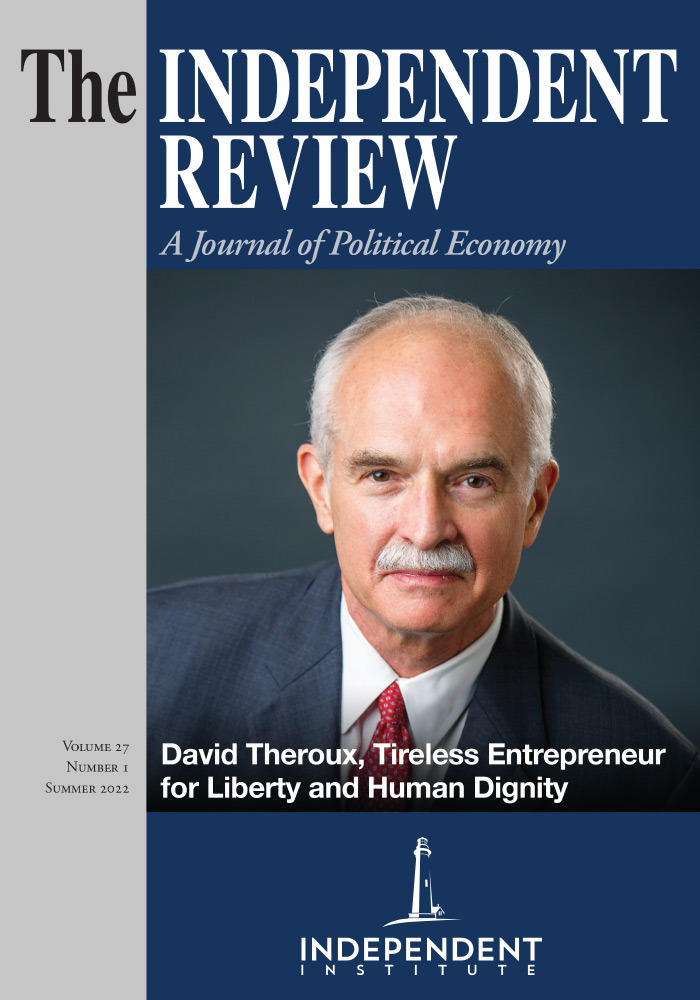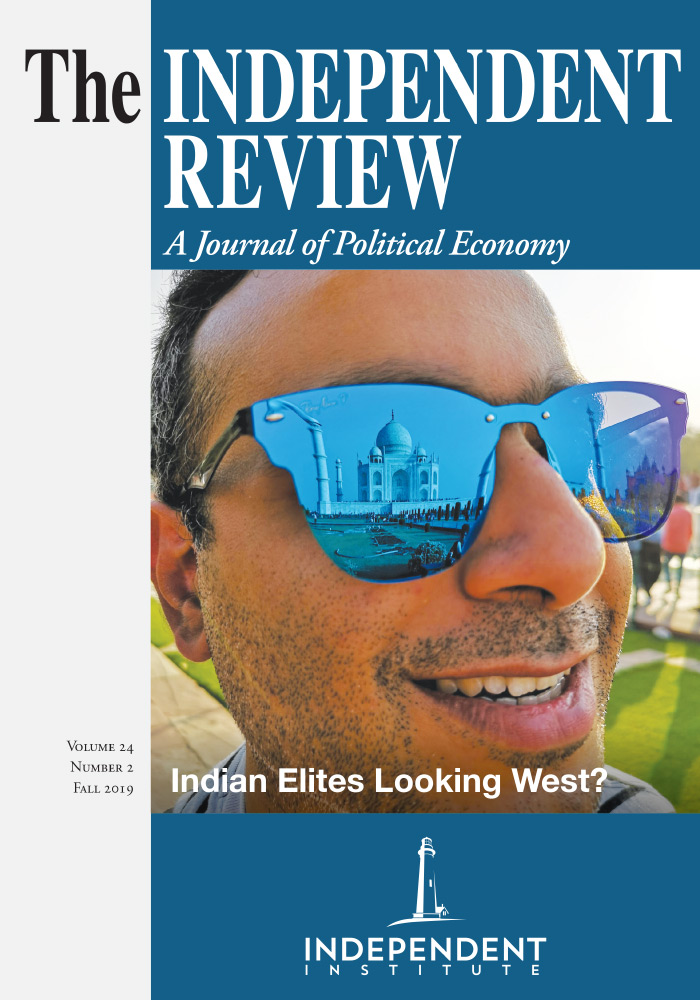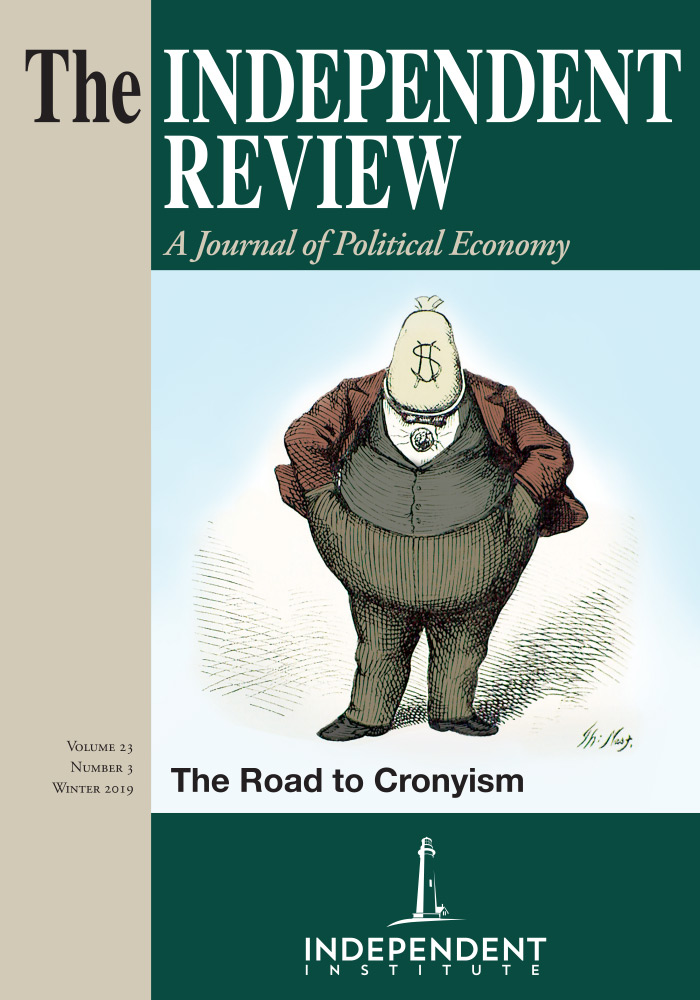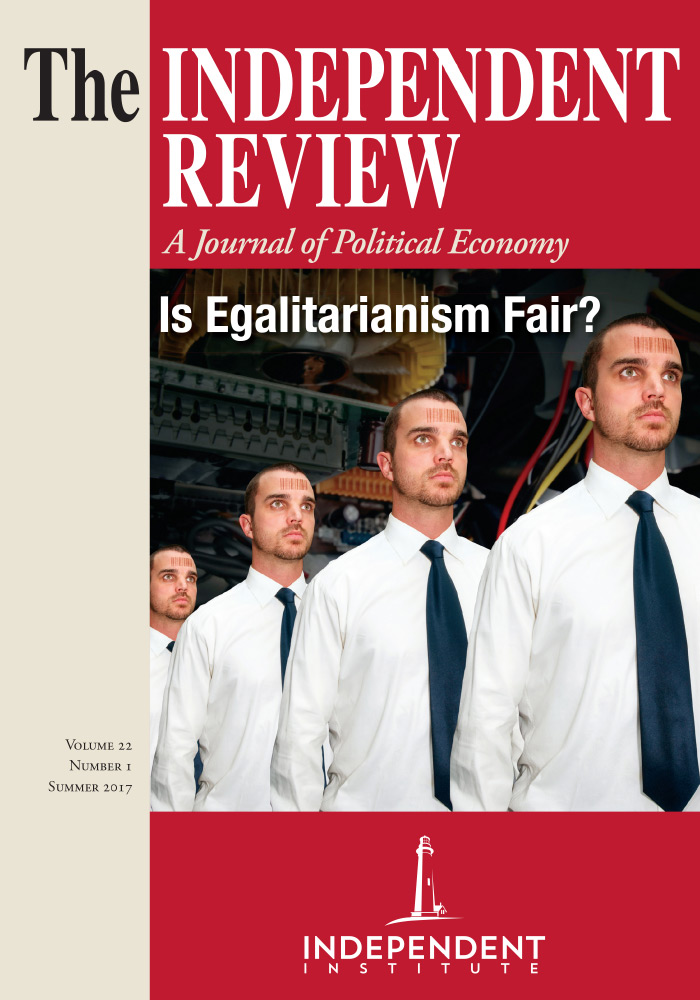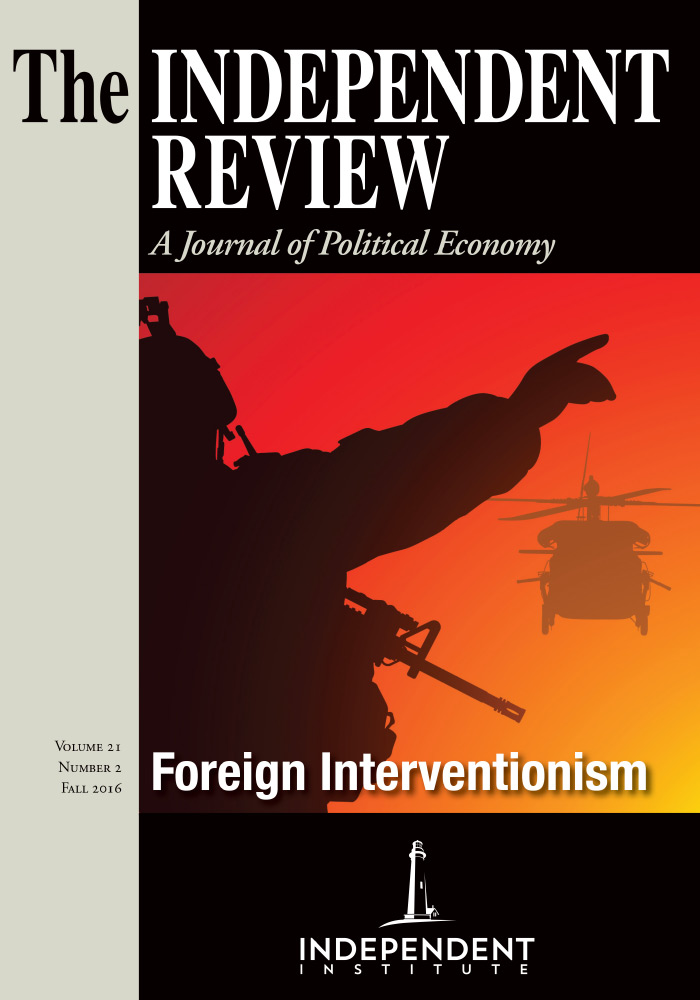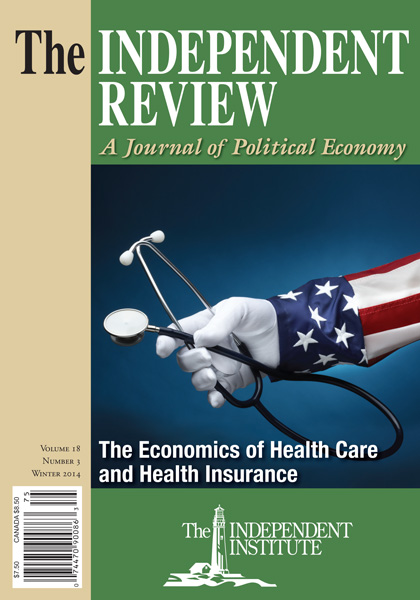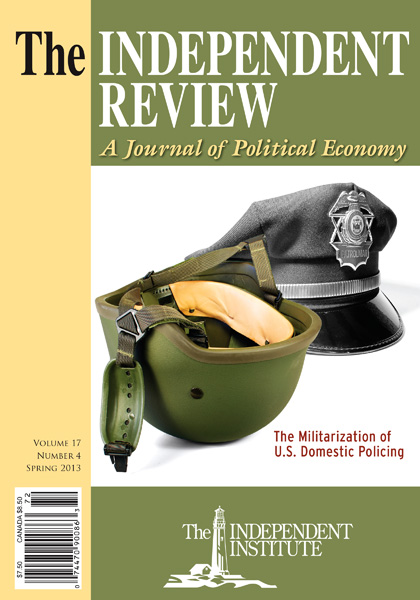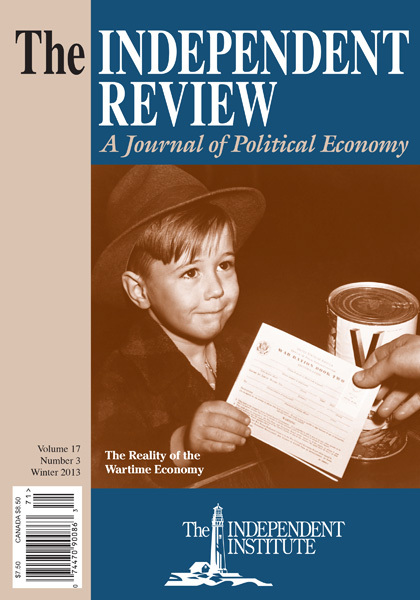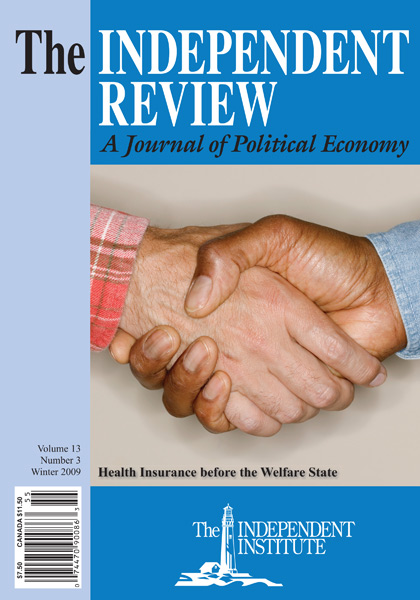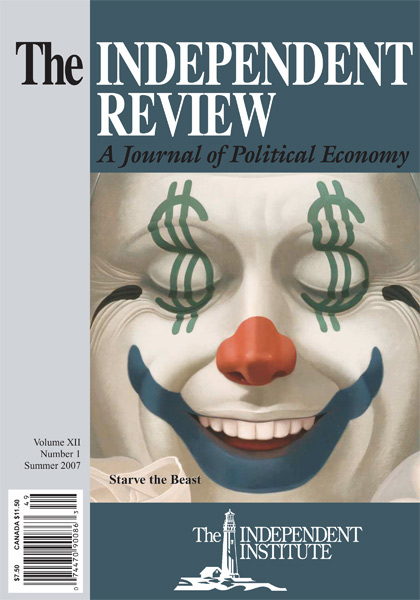The U.S. Environmental Protection Agency’s billion-dollar settlement with heavy-duty diesel engine manufacturers illustrates an important new stratagem for the agency -- regulation by litigation. Just as the manufacturers had developed a technology that conformed to the EPA’s dictates but not to its unwritten aim, so the EPA has developed a device compatible with its broad authority but not necessarily with Congress’s intent that the agency improve environmental quality.
Article
In the past few years, a form of federal regulation has emerged that makes the established rulemaking process look almost benign by comparison. Besides producing a steady flow of new rules to regulate the behavior of firms and industries through a process that follows due-process procedures and adds new pages to the Federal Register, the U.S. Environmental Protection Agency (EPA) has been filing lawsuits for the purpose of regulation. Thus, the EPA’s enforcement division has added a second engine to the regulatory train. As Robert Reich, secretary of labor in the Clinton administration, has observed, “The era of big government may be over but the era of regulation through litigation has just begun” (1999). This new form of regulatory activity is called regulation by litigation (Viscuzi 2002; Yandle, Morriss, and Kosnik 2002).
When agency-sponsored suits are piled on top of agency rules, regulated firms and their customers get caught in a maze so filled with unexpected costs and outcomes that the motivating public-interest goals, if present at the outset, can get lost in a dizzying hurricane of briefs and penalties. After a while, for example, no one seems to be checking on air quality. Along the way, the incentive for regulated firms to settle and thus escape the costly maze becomes all the more attractive.
Reich’s comment came after the attorneys general of forty-six states had signed a $246 billion settlement with the tobacco industry that specified, among other things, how the firms would market their products. In addition to providing much welcomed revenues to hard-pressed states, the settlement leaves the industry regulated by litigation (Rhodes 2003).
As the tobacco suits were going forward, the EPA was suing and settling with the major producers of heavy-duty diesel engines. Under attack by the EPA’s enforcement division, the engine producers were charged with using EPA-approved electronic controls -- developed in large part in response to earlier regulation -- to “defeat” EPA’s mandated engine emissions tests. In a good example of the regulatory doublespeak common at the EPA, the engine controllers were said to have “defeated” the emissions standards by ensuring that the engines met precisely the EPA standards using EPA’s tests. Because the EPA’s engine test focused only on simulating urban driving conditions, however, meeting the test standard allowed the engine controllers to focus on mileage rather than on emissions under highway driving conditions. In effect, the EPA sued the engine manufacturers because the engine makers had not designed their engines to meet a test procedure EPA had not created.
Despite the legal absurdity of the EPA’s position, in 1998 the firms and the EPA signed a $1 billion settlement that tightens the previous regulatory standards and specifies how the industry will regulate emissions of nitrogen oxides (NOx). Other industries caught in the EPA’s regulation-by-litigation maze include major refinery operators, electric utilities, and wood-product firms.
In this article, we examine regulation by litigation by focusing on the EPA’s suit against diesel engine manufacturers, but we seek to do more than just examine and organize the details of a complex regulatory story. Our purpose is to explain why regulation by litigation emerged when it did and to identify the circumstances in which, given the choice, regulators will select this regulatory instrument when seeking to chasten an industry or to alter industry behavior. We begin with some theoretical background on regulation, showing how theories that claim to predict regulator behavior can be applied to regulation by litigation. Then we turn to the centerpiece of our report, an analysis of the diesel engine episode of regulation by litigation.
Litigation as Regulation
Theories of regulation may help us to understand the choices regulators make when they decide to take action. For example, public-interest theory (Bernstein 1955) holds that politicians and their appointees systematically seek to serve a broad public interest, always searching for lower-cost ways to provide public benefits. Dissatisfaction with this theory’s inability to predict outcomes and a recognition of what in fact seemed to be going on led to the development of the capture theory (Kolko 1963), wherein the regulated end up “capturing” the regulators. Capture theory seemed to gain traction in predicting regulatory outcomes, but it failed to predict which of several competing special-interest groups would win the contest to capture the regulator. George Stigler (1974) and Sam Peltzman (1976) developed positive theories that now form the basis of a rich body of prediction-based empirical work explaining the details of regulation (see Yandle 2001). Fred McChesney (1991) added a refinement to these theories with his “extraction” theory. Instead of explaining the features of regulations added to the legal landscape, extraction theory explains political actions taken to postpone or end regulatory ventures. In these episodes, politicians in effect extract payments from threatened firms and industries in exchange for calling off the regulatory hounds. Finally, the “bootlegger and Baptist” theory (Yandle and Buck 2002) explains how regulation can occur as one supporting group (labeled Baptists) takes the moral high ground while another (labeled bootleggers, who are reinforced by the Baptists) simply seeks to gain competitive advantage.
No one theory of regulation can be viewed as sufficient to explain all regulatory actions. However, out of these theories comes a common notion that concentrated gains and diffuse costs can help explain the regulatory process. All else being equal, regulators will attempt to spread the cost of their action across a large number of relatively powerless consumers while facilitating a concentrated political gain. Firms that have the most to lose or gain will struggle longest and hardest to alter or deflect regulatory costs. Regulation by litigation fits this pattern.
Consider the tobacco episode. The gains from the tobacco settlement are concentrated in a relatively few hands -- the attorneys who bring the suits, the tobacco companies that are cartelized by the action, and state politicians who have more money to allocate to favored projects. Meanwhile, the cost of the settlement is imposed on smokers worldwide. Outside the Western world, most smokers are unaware of the settlement and its costs, and in the United States smokers may not know that the higher prices of cigarettes incorporate in part the costs of the settlement.
In a similar way, the EPA’s suit against diesel engine producers involved a small number of heavy-duty engine producers, firms such as Cummins, Caterpillar, Detroit Diesel, Navistar-International, and Volvo, as well as a massive number of users who purchase diesel engine–equipped trucks and other machinery. Together, these parties bore the costs. Who were the winners? We argue later that the EPA and the Clinton White House reaped political gains from a high-profile settlement accompanied by multi-million-dollar fines levied against these few large, well-known companies. In this sense, the executive branch of the federal government was the bootlegger who operated under the cover of environmental “Baptist.” As a result, the costs of the EPA’s action now are spread across a huge number of truck and equipment purchasers.
Were there other winners, in a relative sense? Perhaps. We can also examine the diesel episode in another light. Regulation by litigation also may be used to divide and conquer. Traditional regulation often requires all firms in an industry to adopt similar technologies or to meet similar standards. This coincidence of interest spurs them to create a cartel, enabling them to wrest some benefits from regulation, such as higher prices. Successful suits attacking one or two major firms in the industry will disrupt this regulation-based cartel, raising costs for the firms that are sued and keeping them from opposing regulatory actions that might be taken against other firms in the industry. Indeed, the bruised firms may become quiet supporters of action against their competitors, arguing for a level playing field. Competition in the struggle to develop a “winning” regulatory technology becomes more productive than competition to build more desirable consumer products.
During important political seasons, when symbols can be more important than substance, if not themselves the substance, regulation by litigation can be used to capture valuable political gains that old-fashioned regulation cannot. Regulation by litigation is quicker, requires no extended announcements and related hearings, is not subject to administrative safeguards, and, once in the courts, is more costly to alter through political action. Unlike regulations that may be in the pipeline and not yet final, which can be cancelled by mere notice in the Federal Register, suits in progress tend to continue. Then, when settlements occur, the announcement of large civil penalties telegraphs to important constituents the message that enforcement actions are being taken. The size of the settlements can be esteemed as a trophy by those who favor regulation. Regulation-by-litigation trophies can then serve as glittering bookends for the boring pages of traditional regulation that rarely make headlines once the rules are in place and are operating.
The Regulatory Options
Like most regulatory agencies, the EPA has three options when initiating a new regulation.
First, the agency can engage in “regulation by rulemaking.” This involves a notice of the proposed rule, a comment period for any and all parties to express their reactions to the agency, and a final notice of rulemaking, which responds to the comments received from interested parties. Once the regulation is final, affected parties bring suit against the agency if they have a basis for doing so.
Second, the EPA may choose a modified and somewhat less-contentious approach: “regulation by negotiation” or “negotiated rulemaking” (Harter 1982). Here, a regulatory agency decides that it will use a formal consensus-building process before coming forward in the Federal Register with a proposed rule. The agency determines the composition of a working group that will consider the rule to be developed; names a time, place, and moderator for the negotiation; and announces the details in the Federal Register along with a request for additions to the list of parties to be represented and other suggestions for improving the process. After receiving comments, the agency proceeds, seeking to accommodate objections and concerns, with the goal of gaining consensus among the negotiating parties. Following the negotiations, the agency undertakes a traditional rulemaking procedure, using the result of the negotiations as the basis for the proposed rule. Although promoted heavily as a means of reducing conflict in rulemaking, negotiated rulemaking has been disappointing (Susskind and McMahon 1985, 136). The EPA has used the procedure more than any other agency, suggesting that it sees some value to the agency in the process.
The third option, regulation by litigation, is all that negotiated rulemaking is not. Here, the regulator abandons the traditional regulation-by-rulemaking process and heads to the courts. The large hammer of suit, penalties, or settlement is used to achieve what might have been accomplished by other means.
The movement from traditional regulation to litigation in the courts raises a basic constitutional question as to where and how public policy will be made. By constitutional design, elected representatives are designated to make the collective decisions that affect everybody. Decisions to regulate guns, diesel engines, emissions from electric utilities, and drugs are political decisions made by legislative bodies and generally delegated to administrative agencies, not to courts. The courts are available to adjudicate matters of legislative intent and interpretation. They also play an important role in the enforcement of rules that have evolved through the regulatory process. When litigation is used to create substantive rules, however, rather than simply to enforce existing rules, political accountability and oversight are short-circuited.
Regulation by Litigation: Examples
Before considering the diesel engine litigation, let us review a prominent episode in which the EPA used regulatory litigation against an industry subject to the agency’s traditional regulatory powers: the electricity generator industry. Filed at about the same time as the suit against diesel engine manufacturers, this case also involves compliance with technical regulations that had been in place for years. It also was motivated by efforts to reduce emissions of NOx, the only criteria pollutant regulated by the EPA that continues to grow in spite of extraordinary efforts since 1970 to control it (Parker and Blodgett 2001).
As the nation’s protector of environmental quality, the EPA faced a serious challenge in the early 1990s. Emissions of NOx, a precursor to ozone, were so large that a major region of the northeastern United States was about to be declared in “nonattainment” with respect to the ozone standard. After such a declaration, the EPA would have to impose burdensome and politically contentious constraints on growth and transportation, so it searched for ways to gain significant reductions of NOx emissions. One possibility was to take a dramatically new position on the EPA’s New Source Review process. The definition of what actions might cause an old plant to become legally “new” and therefore subject to more stringent emission standards plagued both industry and the regulators, creating uncertainty throughout the industry.
While wrestling with the definitions, the EPA began to adopt the regulation-bylitigation tactic in connection with New Source Review requirements, starting with the wood-products industry. The EPA charged wood-products firms with having crossed the new-source line in the past while making modifications and repairs. The firms claimed that they had received EPA approval and permits for the past work, all part of the New Source Review process, but the EPA prevailed, and the firms settled.
Then, in November 1999, the EPA took aim at major electrical utility targets (Domike and Zacaroli 2000). The enforcement division issued notices of violation to seven electric utilities and administrative compliance orders to the Tennessee Valley Authority. The agency charged that since 1977 the firms had modified plants in ways that should have triggered New Source Reviews and therefore possible installation of new-source emission controls. At a press conference announcing the investigation, EPA administrator Carol Browner indicated that the enforcement action was “one of the largest investigations in the history of EPA.” Attorney General Janet Reno described the effort as “one of the most significant enforcement actions in our nation’s history” (Browner and Reno qtd. in Stagg 2001). The investigation and notice of violations quickly expanded to include thirty-two power plants operating in ten states.
The EPA also investigated the twenty-year history of New Source Review permits issued to firms in the petroleum-refining industry. Suits were filed against thirty-one refineries. By July 2001, the EPA had settled with BP Amoco, Koch Petroleum Group, Motiva Enterprises, Equilon Industries, Deer Park Refining, Marathon Ashland, and Premcor Refining. The record settlements covered one-third of domestic refining capacity. The EPA was moving at full throttle.
Regulation by litigation, at least in theory, can be seen as an end run around safeguards that Congress has put in place to give the legislative branch the final say on regulation. These safeguards now include the Unfunded Mandates Reform Act of 1995, the Regulatory Flexibility Act of 1980, and the Congressional Review Act of 1996. Together, these statutes provide a political mechanism that can be used to rein in overly zealous regulators, but Congress has no explicit mechanism for reining in overly zealous litigators.
Regulating Diesel Emissions by Litigation
While engaged in the New Source Review suits, the EPA also went after manufacturers of diesel engines, again in pursuit of NOx reductions. Understanding the EPA’s choice of regulation by litigation in this case requires some background on the regulation of diesel engines. Starting in 1970, the Clean Air Act required the EPA to establish “national ambient air quality standards” (NAAQS) for a number of pollutants believed to endanger public health or welfare. Unlike emissions standards, which measure the quality of direct outputs, NAAQS measure overall air quality. States must meet these standards by keeping the total emissions from all sources (including natural sources and reflecting population growth) sufficiently low. If air quality falls below one of these standards, states must have a plan to reduce emissions so that air quality will meet the standard. Failure to meet NAAQS triggers costly nonattainment sanctions, such as the withholding of funds for mass transit and transportation planning.
The Clean Air Act has different regulatory regimes for emissions from stationary and mobile sources. Stationary sources, such as coal-fired electricity generators, are regulated through state-issued permits for emissions. Mobile sources are regulated through EPA mandates requiring vehicles or engines (depending on type) to meet emissions controls. The EPA and the states routinely search for ways to reduce emissions further. The states are more likely to champion mobile-source reductions rather than to impose heavy costs on economically important stationary sources, such as plants and power stations.
The EPA and the states depend primarily on environmental modeling rather than on direct measurement to determine the impact of controls on ambient air. The predictions of models are used to establish command-and-control permits and regulations, but in this case the EPA model accuracy is notoriously faulty (Tierney 2002). As a result, faulty estimates, rather than reality, can drive regulatory measures that turn out to be unrelated to improvements in environmental quality.
By statute, states must construct EPA-mandated implementation plans that satisfy the EPA’s model of air quality, even though this model may diverge from actual environmental conditions. When the relationship between model results and reality breaks down, then the EPA and the states are placed in a position of needing to “catch up.”
In choosing how to do so, the EPA faces different costs and benefits from the three different modes of regulation. For example, various federal laws place some restrictions on the EPA’s traditional regulation. These restrictions are especially important for industries with a long product-design cycle, such as trucks and autos. Regulations can be very disruptive and costly if imposed in midcycle. By federal statute, the EPA cannot issue regulations tightening mobile-source emissions standards without providing a four-year lead time for manufacturers. Regulations cannot change for three years after each change and must be issued four model years ahead of their effective date. So if the EPA issues one change to those regulations, its ability to issue additional changes is limited for a time.
Another factor affecting the EPA’s choice of regulatory approach is that the Clean Air Act relies heavily on “technology-forcing” regulations for mobile sources; in other words, the law requires implementation of technology that does not exist when the regulations are adopted. By its nature, technology forcing may lead regulators to underestimate the time necessary to produce the needed innovations. Technology forcing creates an incentive to design vehicles to meet standards, rather than opening the door to all possibilities for reducing actual emissions (Bielaczyc and Merkisz 1999), and it requires manufacturers to invest in developing features that customers have not demanded and may even reject.
Heavy-Duty Diesel Engines: The Regulatory History
The history of regulation of heavy-duty diesel engines helps us to understand why the EPA moved to regulation by litigation in 1998.[1] Over the past four decades, regulation of heavy-duty diesel engine emissions has gone from almost nothing to a relatively easy opacity test for “smoke” and then through a series of increasingly stringent standards for NOx, hydrocarbons, and particulates. The amount of NOx emissions allowed has fallen, for example, from a combined 16 grams per brake horsepower hour (g/bhp-hr) for NOx and hydrocarbons in 1988 to separate limits of 0.20 g/bhp-hr for NOx and 0.14g/bhp-hr for nonmethane hydrocarbons.
Traditional Regulation
Heavy-duty diesel engines are the engines that large trucks use. In the past, when air pollution first became a national issue, large trucks represented a relatively small part of the total truck fleet and made only a small contribution to U.S. air pollution: only 1.75 percent of total particulates, 0.02 percent of carbon monoxide, 1.9 percent of hydrocarbons, 4.8 percent of NOx, and 0.4 percent of sulfur oxides (SOx) in the early 1970s.
The first federal regulatory efforts were a series of traditional regulatory restrictions on heavy-duty diesel engine emissions. The Air Quality Act of 1967 established a complex approach to controlling air pollution, based on national ambient-airquality criteria and state ambient standards. Of most importance for our purposes, the act dealt with a major concern of mobile-source manufacturers: the threat of inconsistent state standards that might force them to outfit vehicles differently for sale in different states. Spurred by smog problems in Los Angeles, California had adopted auto tailpipe emissions standards for hydrocarbons and carbon monoxide in 1966, having already begun regulating mobile-source emissions in 1961. The 1967 act preempted all future state regulation except for California’s. Mobile-source emissions standards would be created thereafter only at the national level -- and the regulation would include diesel engine emissions.
The initial concern with diesels was “smoke” -- the heavy black fumes visibly emitted by many diesel exhausts. The first smoke standards for diesel engines applied to model year 1970. An initial standard was set for model years 1970 to 1973 and a stricter standard for model year 1974 and later. These standards remained the same through model year 1973, even after the passage of the 1970 Clean Air Act Amendments. The 1967 Air Quality Act created the format that diesel engine regulation follows to this day: specific standards for specific pollutants, standard laboratory tests to measure the emissions, and standard conditions under which the tests for emissions are to be conducted.
The year 1970 brought major changes to air pollution regulation. The Nixon administration created the EPA, and air pollution control was transferred to it from the Department of Health, Education, and Welfare. The Clean Air Act Amendments of 1970 established the basic approach to mobile sources that continues today. The statute mandated reductions in mobile-source emissions by 90 percent for hydrocarbon, carbon monoxide, and nitrogen oxides, with an initial target date of 1975. It also set the framework: mobile-source air pollution was to be controlled primarily through federally mandated technology standards on new vehicles. States were left with the regulation of in-use vehicles, a politically difficult issue for them and an authority they were not eager to exercise.
Heavy-duty diesel engines continued to receive less-stringent treatment through the early 1970s, with only smoke being regulated until the 1974 model year. At that time, engine emissions of hydrocarbon, NOx, and carbon monoxide would begin to be regulated.
Even then, however, the EPA was concerned with potential inconsistencies between test-cycle performance and off-cycle or actual on-the-road performance of engines, although not with respect to heavy-duty engines. The agency issued an advisory circular warning light-duty vehicle and light-duty truck manufacturers that the sophisticated emission control systems then being adopted might be considered illegal defeat devices in certain circumstances. The EPA apparently had an idea that electronic controls might allow trucks to pass the tests but defeat the purpose of the controls in actual practice on the highways.
The 1977 Amendments
The 1977 Clean Air Act Amendments delayed until the 1980s the mobile-source reductions that had been mandated in 1970 but not yet met; they required states to establish inspection and maintenance programs, and they added an explicit requirement that heavy-duty diesel engines should achieve the greatest degree of emission reduction achievable consistent with cost, technical feasibility, noise, energy, and safety factors. That the EPA had done little in the heavy-duty diesel sector may have prompted Congress to specify reductions directly. The amendments called for significant reductions of hydrocarbons and carbon monoxide (by at least 90 percent during and after model year 1983), oxides of nitrogen (by at least 75 percent during and after model year 1985), and particulate matter (during and after model year 1981 or earlier, if practicable). Despite the tightening of the standards, the EPA’s proposals in 1980 did not require new technology to meet them.
According to the statute, the new standards could be revised starting in 1979 and again every three years thereafter. Although the statute imposed more stringent standards, “escape valves” also were included, allowing the EPA to revise temporarily or permanently the statutory standards for several reasons, including cost.
When the EPA set out to implement its congressional mandate to reduce diesel emissions further, it proposed extensive changes in test procedures and instrumentation requirements to make the tests resemble engine-use conditions more closely. The most important development was the EPA’s creation of the transient-engine test standard in 1979 to simulate urban driving conditions (U.S. House Committee on Commerce 2000, 5).
The transient system was designed to make the tests more representative of inuse conditions. The EPA selected the specific test conditions based on a survey of trucks and seven buses driven in New York City and Los Angeles. However, the agency did not attempt to validate its new test and even denied that validation was desirable. Engine manufacturers criticized the EPA’s proposal for transient testing and expressed concerns about the lead time necessary to implement new standards and procedures.
Over the next decade, the EPA continued to tighten heavy-duty diesel engine emission standards under the transient test. The regulations evolved into a complex and stringent list of regulations covering hydrocarbons, carbon monoxide, NOx, and particulates. Model year 1988 brought the first particulate standards for heavy-duty diesels, five years after the EPA imposed the first diesel particulate standards in the world on cars and light-duty trucks. Model year 1991 standards tightened the NOx standard to 5.0 g/bhp-hr and introduced an innovation -- allowance for the averaging and trading of emission credits as long as engine families met certain levels.
Truck manufacturers managed to meet the increasingly tight standards through the 1980s by improving combustion rather than by adding postcombustion treatment of exhaust. Indeed, the first particulate standards, effective in 1988, required relatively minor actions to reduce emissions levels.
One important result of the tougher clean air standards was the increasing reliance on electronic controls in mobile-source engines to meet standards and to improve performance. Whereas the first electronic controls were simply add-ons to existing engines, by the mid-1980s engine manufacturers had begun to introduce fully electronic control systems.
The 1990 Clean Air Act Amendments
The next major amendments to the Clean Air Act came in 1990, after more than a decade of political stalemate caused in part by Michigan congressman John Dingell’s attempts to weaken mobile-source regulation and by political divisions over acid rain (Morriss 2000, 305–6). Section 201 of the Clean Air Act Amendments of 1990 revised the standards for emissions of hydrocarbons, carbon monoxide, NOx, and particulates from heavy-duty vehicles or engines. The new standards pushed the envelope of technology and cost. The EPA was given the authority to revise heavy-duty vehicle or engine standards. The amendments also required that regulations remain fixed for at least three model years and set a lead time of no earlier than the model year commencing four years after promulgation of a revised standard. After the 1990 amendments, the EPA added regulations that forbade the use of defeat devices that would interfere with emissions controls in automobiles and light trucks.
By 1997, the EPA was reporting that heavy-duty diesels were the largest sources of particulates and NOx among mobile sources. This assessment was made on a per engine basis, not on the basis of comparing gasoline and diesel fleets. Although the proportion of diesels was rising, gasoline fleets were still larger by far.
Regulation by Negotiation
While tightening standards during the 1980s, the EPA also attempted to accommodate the need for greater flexibility in engine and truck manufacture. First, the agency introduced delays in implementation because of poor economic conditions in the industry. Second, it delayed tighter standards to give manufacturers more lead time. Third, it introduced “noncompliance penalties” that allowed engines to be sold even if they exceeded the standards, as long as they did not pollute beyond an “upper limit” of acceptable pollution (U.S. EPA 1985, 35374). The companies could pay these penalties rather than keep their products off the market. These noncompliance penalties were intended to accommodate the difficulties manufacturers had in meeting the technology-forcing regulations (U.S. EPA 1985, 35375). This innovation arose from the EPA’s first negotiated rulemaking exercise. Agreement on the rule was reached in four months.
Regulation by Litigation
In 1998, the EPA sued the major diesel engine manufacturers, makers of more than 95 percent of U.S. heavy-duty diesel engines. According to the EPA, diesel emissions were not declining -- as the agency had predicted -- but were instead increasing (Bowman 1997). In its suit, the EPA argued that the use of electronic controllers to increase fuel economy under nonurban driving conditions amounted to the employment of illegal “defeat devices” under the Clean Air Act (France n.d., 19). In essence, it contended that although the engines passed the agency’s test, the electronic controller then adjusted to increase long-haul fuel economy, causing the emission of higher levels of pollutants. EPA administrator Carol Browner claimed that the engine manufacturers “programmed the engine so that it knew when it was being tested and when it was on the road” (qtd. in Johnson 1998, 1).
The engine manufacturers denied the EPA’s claim that use of the controller was illegal and alleged that the EPA had known about their use of electronic controllers from the beginning and at least tacitly had approved it. A highly critical U.S. House Committee on Commerce staff report, Asleep at the Wheel, also concluded that the agency was aware of the engine manufacturers’ use of electronic controllers as early as 1991 (2000, 14). Nevertheless, on October 22, 1998, seven U.S. heavy-duty engine manufacturers settled the enforcement actions by agreeing to pay substantial fines and to devote resources to approved environmental activities. The total resources committed amounted to $1 billion.
Why Regulation by Litigation?
The EPA had a number of incentives to adopt regulation by litigation over other options in the case of diesel engines. Because of the legislated lead-time provisions, it could not tighten diesel emissions standards before model year 2007 through traditional regulation. Moreover, the EPA, the California Air Resources Board, and the diesel engine manufacturers had negotiated a Statement of Principles in 1995 to stabilize regulatory initiatives (U.S. Environmental Protection Agency 1995, 45602–4). Any movement toward revisions of past rules, such as those related to emission testing and controllers, would have been seen as a violation of the Statement of Principles and therefore resisted by the manufacturers.
The EPA had other incentives to adopt regulation by litigation. First, the gap between predicted and actual diesel emissions was contributing to some regions’ failure to comply with NAAQS. Inspection and maintenance programs around the country, part of the effort to come into compliance, were arousing popular unrest in several states. Second, the EPA and the Clinton administration could reap immediate political rewards by appearing “tough on polluters” during the runup to the 2000 presidential election (Wilson 1999, 3268–9). Third, the EPA faced relatively low risks of losing the litigation because the enormous leverage it had over the engine manufacturers made a settlement all but assured.
This leverage arose from the requirement for annual certification of engines. Mack’s vice president of engineering and product planning, for example, told a reporter that the EPA “held a gun to our head by threatening to withhold certification for 1999” (qtd. in Galligan 1998, 2). Other companies echoed this concern. The settlement negotiations took place after the EPA had issued “conditional” certificates of conformity for model year 1998 engines. These conditional certificates did not apply to engines that employed defeat devices, which is to say that the EPA created considerable uncertainty about whether the current family of engines could be sold. At the same time, the engine manufacturers were seeking certificates for model year 1999 engines, and a related “show cause” order from the EPA to the engine manufacturers was pending (U.S. House Committee on Commerce 2000, 16). Although the EPA almost certainly could not have rejected all the heavy-duty engine manufacturers’ model year 1999 engines, inasmuch as doing so would have shut down the industry, the agency did effectively create a “prisoners’ dilemma” for the engine manufacturers. If they all refused to settle, the EPA would have to relent, but if any company settled while the others did not, that company would reap increased market share at the others’ expense. Because the companies could not rely on each other not to settle (and antitrust law precluded their contracting to enforce such a position), each was better off settling. Thus, the companies settled.
Regardless of the merits of the EPA’s case, the agency and the Clinton administration reaped a publicity windfall from the settlement. Attorney General Janet Reno, for example, was quoted as saying, “Every polluter in America had better take note of these record penalties -- if you pollute America’s air, you are going to pay a very high price” (qtd. in Johnson 1998, 120).
Since this settlement, the EPA has continued to call for tighter emission standards for heavy-duty diesel engines, proposing in 2001 a significant reduction for model year 2007. These standards incorporate elements based on the settlement. Japanese and European regulators also are tightening heavy-duty diesel engine emissions standards, but the standards proposed for model year 2007 in the United States are significantly tougher than those proposed for Europe and Japan.
Anticipation and Results
We can now compare what EPA litigators may have anticipated when they obtained the 1998 consent and what has resulted. Taking a public-interest theory approach, one might argue that the EPA chose litigation in order to obtain large reductions of NOx and other emissions sooner than traditional regulation would have provided them and to force technical solutions to eliminate the whole matter of defeat devices. These expectations also assume that engine producers somehow would meet the stricter emission standards on time and that truck builders and fleet operators would be eager to purchase the new engines when they emerged from the factories -- that is, engine buyers would not change their normal buying patterns dramatically. Indeed, the consent agreement required that engine producers not engage in marketing to subvert the intentions of the agreement. The expectations also might assume that engine producers would leapfrog the electronic engine-controller technology and adopt a new technology that could not be operated as a defeat device.
As it turns out, these expectations have not been realized so far and may not be ever. One result of the litigation has been a huge trucking industry prepurchase response to the consent mandates, which suggests that the new engines that meet the tighter standards will not sell very well later on, so their impact in reducing emissions will be less than expected. This prebuy of trucks occurred despite the settlements’ explicit ban on advertising to promote it, and it was driven entirely by customer unease over the new engine designs that the settlements required and by the lack of time for customer quality testing of the new engines. One manufacturer, Detroit Diesel Corp., received so many preorders that its manufacturing plant operated at capacity twenty-four hours per day using three shifts. By contrast, the demand for its new, post–October 2002 engine dropped precipitously. Detroit Diesel’s sales of model year 2002 engines have been more than double the normal sales volume, and it has had to reject more than one thousand orders owing to lack of capacity (Allran 2002, 2).
Consumers apparently do not want to buy the new engines because they cost more and their performance is untested. By some estimates, more than 70 percent of the clean air benefits are lost because of these prepurchase effects. Thus, a larger stock of preconsent-decree engines will be operating than might have been the case had the consent decree not been negotiated.
In short, what EPA litigators reasonably might have anticipated if they were acting according to the public-interest theory has not been achieved. At the same time, trucking companies, truck producers, and diesel engine producers are bearing massive costs as they grapple with the EPA’s efforts to short-circuit the route to cleaner engines. Consumers will eventually bear these costs.
Regulatory Choice
In the diesel engine controversy, the EPA had a choice of regulatory strategies. The agency faced different costs and benefits from regulation by rulemaking, regulation by negotiation, and regulation by litigation.
Environmentalists might criticize a decision to continue using regulation by rulemaking because of the delay in getting results. In contrast, regulation by litigation offers the attraction of bringing about a timely outcome in a politically visible way. Environmental groups, accustomed to using the courts in pursuit of their interests, predictably would support bringing suits against violators and penalizing them.
The diesel engine producers and their constituencies apparently lacked the political clout to deflect the action against them. At the same time, they were big and sufficiently sound financially to pay the fines. They had an economically strong product. The increase in cost associated with litigation, which would be spread across hundreds of thousands of units, was not likely to be large enough to capsize the product in the market.
Timing is another consideration. A new administration is not likely to interrupt actions under litigation, whereas it can easily stop regulations passing through the pipeline. Selection of regulation by litigation places the action out of the reach of an opposing political party should a change of administration occur.
The dynamics of the marketplace constrained the EPA when it sought to increase quickly the reductions in NOx emissions from mobile sources. This fact, too, encouraged the choice of litigation. Only a small part of the stock of diesel engine vehicles is replaced annually. Because of the long life of heavy-duty diesel engines, older engines continue to emit pollutants long after comparable car engines have been scrapped. Furthermore, if newer engines cost more and use more fuel than older ones, then more older engines will be operated longer, and replacements will be purchased before the more costly engines arrive. These facts reduce the potential improvement from tighter standards.
In a search for potentially large reductions in NOx, the EPA previously had identified diesel engine producers as the most readily targeted component of the industry. Regulation would eventually bring the emission reductions the agency desired, and it cost less to impose regulation on engines made by a few manufacturers and destined to be installed in trucks and other heavy equipment than to sue all those who might install or operate diesel engines in their equipment. The logic that supported initial regulation became the logic that supported litigation. With a favorable settlement, the agency would be able to trumpet the prospects of earlier improvements, no matter what the final accounting might render.
Changing technology provides a rationale for the litigation strategy. The Clean Air Act sometimes forces technology for mobile sources. Manufacturers then must invest in developing technology to which their customers are indifferent or even hostile.
One of the technologies that earlier regulatory efforts had “forced” was sophisticated electronic control of combustion, making possible different modes of operation under different conditions sensed by the controller. Such controllers allow engine manufacturers to offer customers enhanced performance in dimensions other than those the regulators’ tests examine directly. At times, the customer may assign higher value to fuel efficiency than to emission reductions. Trade-offs exist between regulator-desired engine characteristics (such as low emissions) and customer-desired engine characteristics (such as low cost and high fuel economy).
As diesel engine emission regulation evolved, the EPA took a performancestandard approach in setting emission standards. It did not specify the technologies to be applied to engines, allowing the standards to be met in a variety of ways, and it spurred producers to compete in the development of engines that would meet the standard.
However, the EPA used a technology standard in developing test procedures. Although producers competed in designing engines, ultimately they also competed with the details of the test procedure itself in developing controls for operating the clean engine technologies that would sell in the marketplace. A characteristic of diesel engine technology causes a trade-off between NOx (and other) emissions and fuel economy. (NOx emissions and carbon monoxide emissions present another trade-off.) At the margin, cleaner emissions come at the expense of fuel efficiency, and vice versa. The controller developed by the industry and recognized by the EPA generates fewerNOx emissions in urban areas, where population density is high; it generates more NOx emissions, fewer carbon monoxide emissions, and better fuel economy in long stretches of open highway, where population density is low.
Seeking to minimize the cost induced by regulation, diesel engine producers have an incentive to design engine controllers that enable engines to satisfy EPA-dictated tests for urban air quality standards, but also that improve fuel efficiency when the engine operates outside urban environments. In terms of the relevant private interests, one part of the technology mattered little to trucking companies and their customers; the other part, fuel efficiency, mattered very much. Apparent decisions to trade private benefits (fuel-cost savings) for public benefits (lower NOx emissions) played into a successful litigation strategy for the EPA. The engine controller, which could be described as a performance maximizer subject to an urban emission control constraint, could now be demonized as being simply a “defeat device.”
Serving the Public Interest
Before the EPA engaged in regulation by litigation, it employed traditional regulation. Such regulation can be justified on the grounds that air pollution causes some harm to many individuals, but the harm to each individual is so small and the number of individuals is so large that no private action is feasible. Assuming such to be the case, the government can act on behalf of the harmed individuals.
In the case of air pollution, the passage of the Clean Air Act and its amendments exemplified such government action. Regulations affecting diesel engine emissions evolved from the statute. When Congress debated the statutes, the affected industries and all other interested parties had access to the debate. When the EPA engaged in regulation by rulemaking and regulation by negotiation, the industry and all other interested parties had access to the regulatory process and to the courts if they regarded the regulatory process as improper. Everyone had the same number of bites at the apple. In the process, some modicum of regulatory certainty was assured for the industry and for all who favored stricter standards. The process was transparent to the participants and to the monitors of the regulatory process in the legislative and executive branch.
The EPA’s decision to litigate did not necessarily represent a second bite at the apple for those who support cleaner air. Rather, it was a fresh bite by the regulator for the regulator. In our view, the EPA as a regulator faced a political challenge. The agency was confronted by northeastern states that faced the potential costs of nonattainment status; it recognized that past estimates of improvements in air quality were faulty; it was part of an administration that wished to be considered tough on polluters; and the regulatory process constrained fast action. By employing regulation by litigation, the EPA took its own bite from the apple.
Unfortunately, this regulatory shift has caused uncertainty to increase in the diesel engine industry. The cost of this uncertainty may far exceed the amount of penalties imposed by courts or through settlements.
The EPA’s recent extensive employment of regulation by litigation has set a new precedent in the already controversial annals of federal regulation. In time, we shall see whether regulation by litigation becomes a dominant form of regulation or whether the EPA’s expansive use of the process will bring about the demise of the process. We have no reason to predict that regulation by litigation will end soon. Indeed, the various theories we have employed to explain this episode suggest that when the conditions that triggered it arise again, then regulation by litigation will be employed again.
Footnote
1. The emission reduction data given in this section are taken from various EPA regulations published in the Code of Federal Regulation, various years.
References
Allran, Robert. 2002. Appendix C: Declaration of Robert Allran in Detroit Diesel Corporation’s Motion in the Alternative to Stay Compliance with the Consent Decree Pull-Ahead Requirements. (Copy on file with authors.)
Bernstein, Marver. 1955. Regulating Business by Independent Commission. Princeton, N.J.: Princeton University Press.
Bielaczyc, Piotr, and Kerzy Merkisz. 1999. Euro III/Euro IV Emissions: A Study of Cold Start and Warm Up Phases with S1 (Spark Ignition) Engine. In Emissions: Technology, Measurement, and Testing, 117–27. Warrendale, Pa.: Society of Automotive Engineers.
Bowman, Chris. 1997. EPA Off on Diesel Rigs’ Emissions? Clean Air Goals May be Tougher to Meet. Sacramento Bee, October 18. [Reprinted in U.S. House of Representatives 2000.]
Domike, Julie R., and Alec C. Zacaroli. 2000. Reinterpretation of NSR Regulations Could Have Costly Implications for Business. Daily Environment Report 45 ( March): B1.
France, Chet. n.d. Accounting for Off-Cycle NOx Emissions from Heavy-duty Diesels. Washington, D.C.: U.S. Environmental Protection Agency, Engine Programs and Compliance Division, EPA Office of Mobile Sources.
Galligan, Jim. 1998. EPA Betrayed Us. Transport Topics, November 2, 2 and 30.
Harter, Philip J. 1982. Negotiating Regulations: A Cure for Malaise. Georgetown Law Journal 71: 1–117.
Johnson, Jeff. 1998. EPA Fines Engine Makers. Transport Topics, October 26, 1.
Kolko, Gabriel. 1963. The Triumph of Conservatism: A Reinterpretation of American History, 1900–1916. New York: Free Press.
McChesney, Fred. 1991. Rent Extraction and Interest Group Organization in a Coasean Model of Regulation. Journal of Legal Studies 20: 73–90.
Morriss, Andrew P. 2000. The Politics of the Clean Air Act. In Political Environmentalism: Going Behind the Green Curtain, edited by Terry L. Anderson, 263–318. Stanford, Calif.: Hoover Institution Press.
Parker, Larry B., and John E. Blodgett. 2001. Air Quality and Electricity: Initiatives to Increase Pollution Controls. CRS Report for Congress. Washington, D.C.: Congressional Research Service, Library of Congress.
Peltzman, Sam. 1976. Toward a More General Theory of Regulation. Journal of Law and Economics (August): 211–40.
Reich, Robert B. 1999. Regulation Is Out, Litigation Is In. American Prospect Online, February. 11.
Rhodes, Karl. 2003. Up in Smoke. Region Focus (spring): 21–25.
Stagg, Michael K. 2001. The EPA’s New Source Review Enforcement Actions: Will They Proceed? Trends (November–December).
Stigler, George. 1974. The Economic Theory of Regulation. Bell Journal of Economics and Management Science 5 (spring): 3–21.
Susskind, Lawrence, and Gerard McMahon. 1985. The Theory and Practice of Negotiated Rulemaking. Yale Journal of Regulation 3 (fall): 133–65.
Tierney, Gene. 2002. Mobile6 and Ngm. Presentation.
U.S. Environmental Protection Agency. 1985. Control of Air Pollution from New Motor Vehicles and New Motor Vehicle Engines; Nonconformance Penalties for Heavy-Duty Engines and Heavy- Duty Vehicles, Including Light-Duty Trucks. Federal Register 50 (August 30): 35374–401.
———. Office of Air and Radiation, Office of Mobile Sources. 1995. EPA, California Air Resources Board, and Manufacturers of Heavy-Duty Engines Sign “Statement of Principles.” EPA420-F-95-010a. Washington, D.C.: U.S. Environmental Protection Agency, July.
U.S. House Committee on Commerce. 2000. Asleep at the Wheel: The Environmental Protection Agency’s Failure to Enforce Pollution Standards for Heavy-Duty Diesel Trucks. March.
Viscuzi, W. Kip. 2002. Overview. In Regulation Through Litigation, edited by W. Kip Viscuzi, 1–21. Washington, D.C.: AEI-Brookings Joint Center.
Wilson, George C. 1999. Clinton: Build Trucks That Save Bucks. National Journal, June 6, 3268–69.
Yandle, Bruce. 2001. Public Choice and the Environment. In The Elgar Companion to Public Choice, edited by William F. Shughart II and Laura Razzolini, 590–610. Cheltenham, England: Edgar Elgar.
Yandle, Bruce, and Stuart Buck. 2002. Bootleggers, Baptists, and the Global Warming Battle. Harvard Environmental Law Review 26: 177–229.
Yandle, Bruce, Andrew P. Morriss, and Lea-Rachel Kosnik. 2002. Regulating Air Quality Through Litigation. Bozeman, Mont.: PERC.
Acknowledgments The authors express appreciation to PERC for encouraging the use of materials developed in a PERC research program. Special appreciation goes to Jane Shaw for her editorial assistance.
| Other Independent Review articles by Andrew P. Morriss | ||
| Winter 2019/20 | Robert Nelson: Taking Economics Seriously, but Still Having Fun | |
| Spring 2010 | The Legal Foundations of Free Markets | |
| Spring 2005 | Chasing the Wind: Regulating Air Pollution in the Common Law State | |
| [View All (4)] | ||
| Other Independent Review articles by Bruce Yandle | ||
| Fall 2022 | Gaining Ground: Markets Helping Government | |
| Summer 2020 | The Next Fifty Years: Optimistic or Pessimistic? | |
| Spring 2020 | Narrative Economics: How Stories Go Viral and Drive Major Economic Events | |
| [View All (14)] | ||

